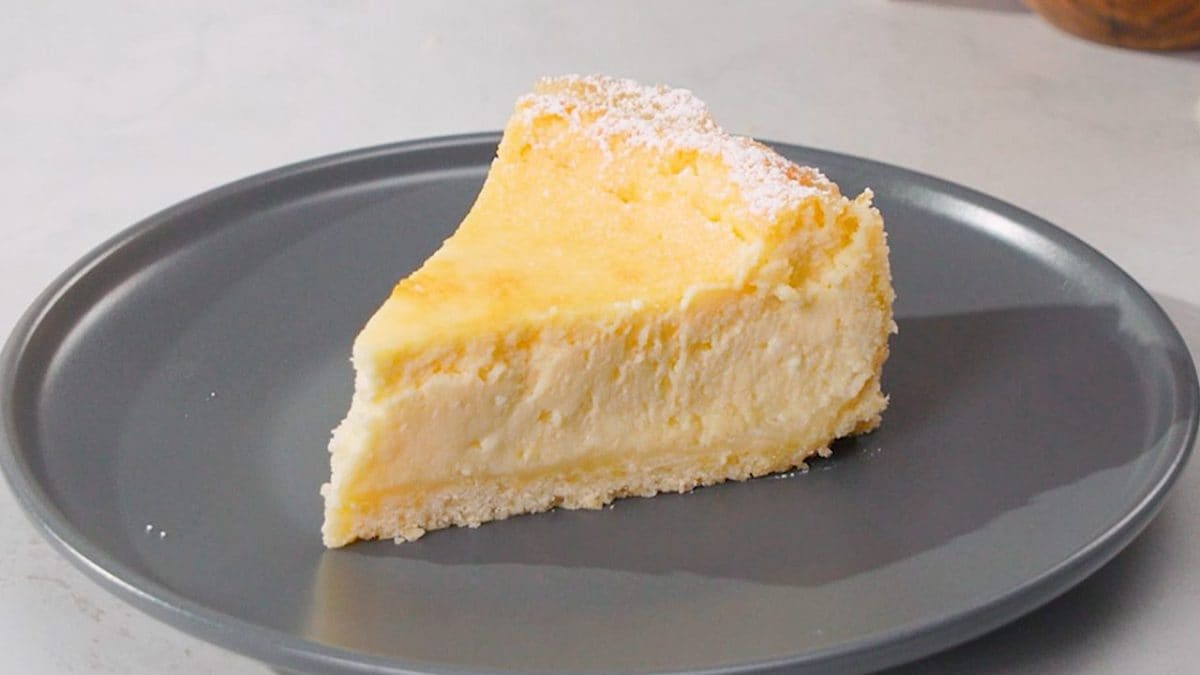
Käsekuchen is a German cheesecake recipe that includes quark cheese rather than traditional cream cheese. It has a creamy texture and a lemony undertone that makes this cake both refreshing and rich at the same time. This cake can be served for dessert after a meal or as part of kaffee und kuchen, a meal where coffee and cake are traditionally served in the afternoon.
To make this German cheesecake, you begin by mixing flour with sugar, butter, egg, and salt together until it forms a dough. Then, refrigerate it for 30 minutes. Next, you make the cheesecake mixture by mixing quark with eggs, sugar, instant custard, lemon juice, and lemon zest until combined before folding in whipped cream. The dough gets pressed into a cake pan before being filled with the cheesecake mixture and being baked in the oven. The result is a cake that is creamy, tangy, and lemony, and perfect for those who love cheesecake.
What is Käsekuchen?
Käsekuchen is German cheesecake, and in fact, the work is literally “cheesecake” in German. This cake classically includes quark cheese rather than the cream cheese in American-style cheesecake.
Quark is a type of cheese that is slightly sour in flavor and creamy. While some people might compare it to cottage cheese or even ricotta cheese, it is quite different from both. It has more of a yogurt-like flavor and doesn’t include any salt. Quark is often difficult to find outside of German or Slavic-speaking countries but it could easily be replaced with a mixture of sour cream and ricotta to mimic the texture and taste.
Käsekuchen usually includes a shortcrust pastry rather than a graham cracker crust like other cheesecakes. It is also notable for the addition of lemon zest which accentuates the natural flavor of the cheese.
Pro Tips
- Rather than using chilled butter for the crust as you would with other pastry doughs, make sure the butter is softened.
- When you grate the lemon zest, make sure you only grate the yellow part rather than the white pith as the white pith tastes bitter.
- If you don’t have any lemons on hand, you could substitute it with orange, although it would be less traditional.
- Use a springform pan which will allow you to easily remove the cake from the pan.
- If you can’t find quark cheese where you live, you could replace it with a mixture of ricotta and sour cream.
- This is a denser cake than American-style cheesecake. You will know it is properly baked once it is golden and set.
- This cake should be chilled in the fridge before you serve it. This will ensure that it slices cleanly.
German Vs. New York Cheesecake
German cheesecake, or Käsekuchen, uses quark—a tangy, soft cheese—which gives it a lighter, slightly airy texture. It’s often less sweet and sometimes features a thin crust. New York cheesecake, in contrast, is dense and creamy, made with rich cream cheese and often includes heavy cream or sour cream for added decadence. Its crust is typically a graham cracker base, making it a much richer, more indulgent treat.
What to Serve with Käsekuchen?
Käsekuchen only needs a dusting of icing sugar to make it ready for serving. However, if you would like to make it a little more fancy, you can serve it with a drizzle of raspberry coulis and a dollop of whipped cream.
What if I Can’t Find Quark Cheese?
If you can’t find quark cheese where you live, you could replace it with a mixture of sour cream and ricotta cheese. The mixture will have a similar texture to quark cheese while also having some tanginess. A mixture of Greek yogurt and regular cream cheese would be a suitable replacement as well.
How Can I Vary Käsekuchen?
If you would like to make your version of käsekuchen a little more special, you could add raisins into the cheese mixture before baking the cake. Alternatively, you could add fresh fruit to the cake such as apricots, blueberries, or cherries.
How Can I Tell the Käsekuchen is Baked?
You will know the käsekuchen is baked when it is golden in color and set. You can also test the cake’s doneness by inserting a skewer or toothpick into the centre of the cake; if it comes out clean, it is done.
More Cheesecake Recipes You Must Try!
Classic New York Style Cheesecake
How to Store Käsekuchen
Your käsekuchen should be lightly covered with plastic wrap and stored in the fridge. It should keep for 3 to 4 days in the fridge.
Ingredients
How to Make Käsekuchen
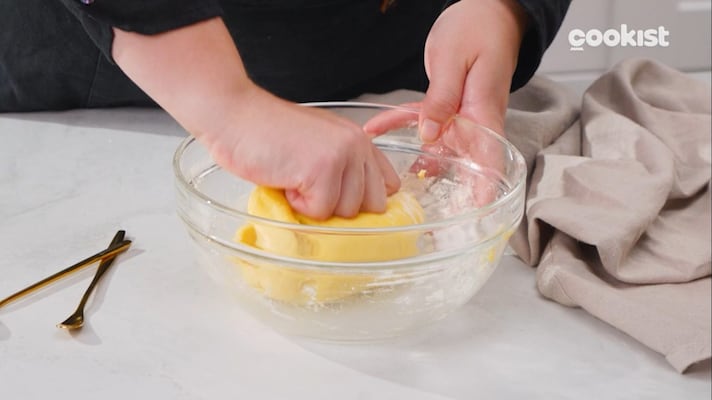
For the crust, in a bowl, mix the flour with the sugar, butter, egg, and salt with a fork. Using your hands, knead the mixture into a dough. Cover it and refrigerate it for 30 minutes.
For the crust, in a bowl, mix the flour with the sugar, butter, egg, and salt with a fork. Using your hands, knead the mixture into a dough. Cover it and refrigerate it for 30 minutes.
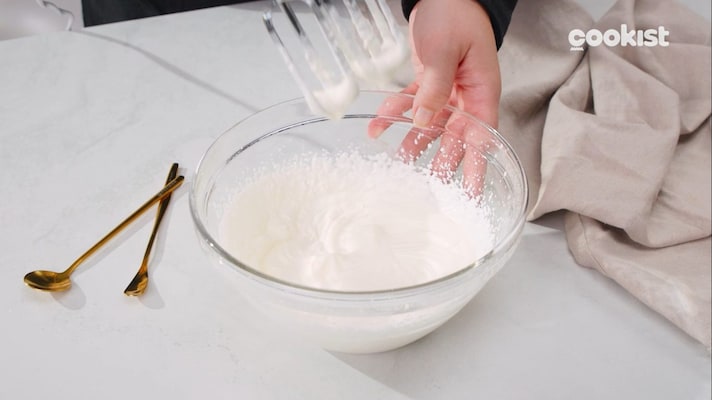
For the filling, in a bowl, whip the cream until stiff peaks are formed.
For the filling, in a bowl, whip the cream until stiff peaks are formed.
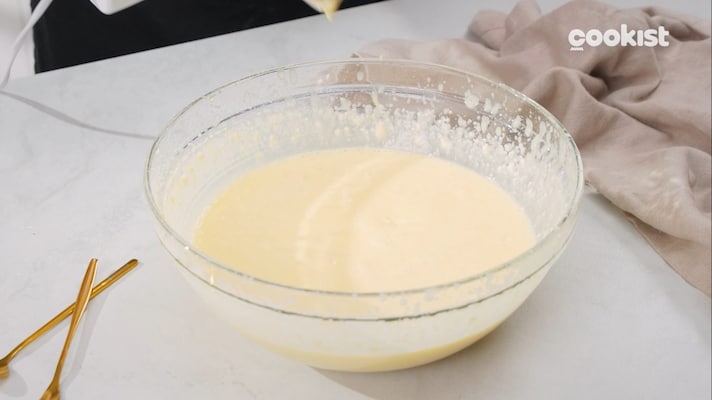
In another bowl, mix the quark cheese with the eggs, sugar, instant vanilla custard, lemon zest, and lemon juice until smooth and combined.
In another bowl, mix the quark cheese with the eggs, sugar, instant vanilla custard, lemon zest, and lemon juice until smooth and combined.
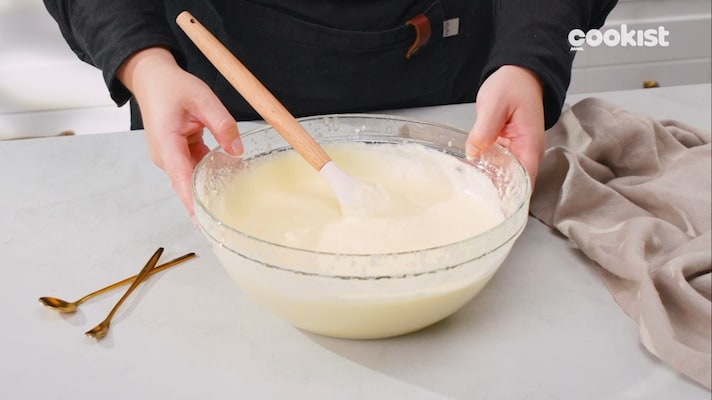
Gently fold the whipped cream with the cheese mixture.
Gently fold the whipped cream with the cheese mixture.
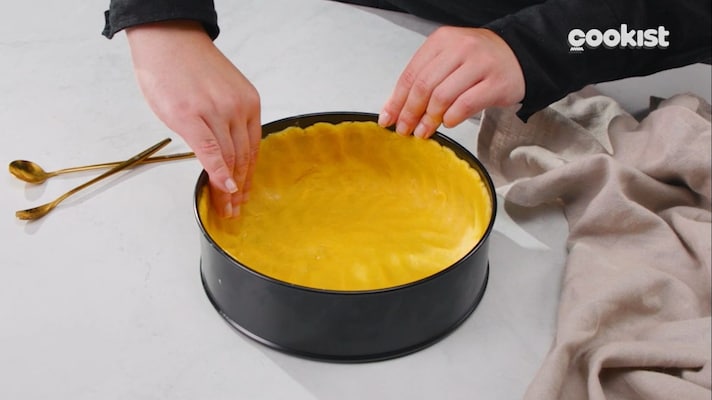
Grease a 20 cm cake pan and line it with parchment paper. Press the dough into the base and up the sides of the cake pan.
Grease a 20 cm cake pan and line it with parchment paper. Press the dough into the base and up the sides of the cake pan.
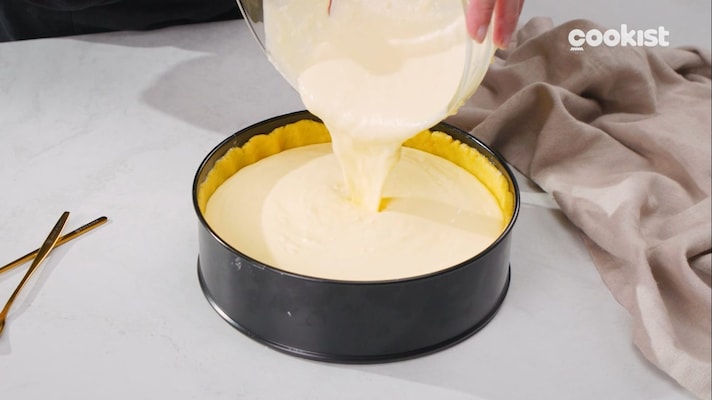
Pour the cheese mixture into the crust and bake it in a 160°C (320°F) oven until golden and set, about 1 hour.
Pour the cheese mixture into the crust and bake it in a 160°C (320°F) oven until golden and set, about 1 hour.
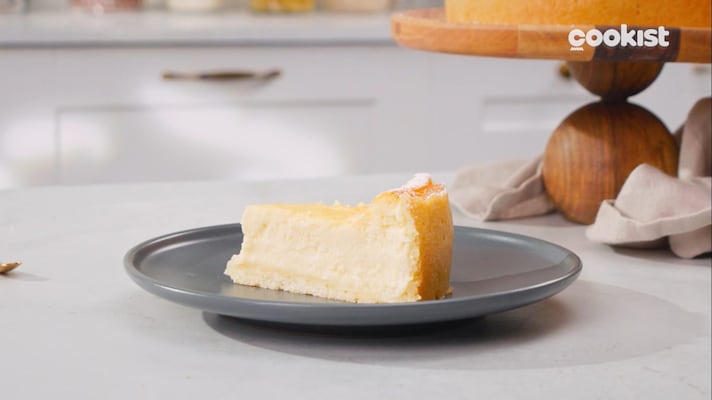
Allow the cake to cool before removing it from the pan. Then, chill it overnight in the fridge before serving it dusted with icing sugar.
Allow the cake to cool before removing it from the pan. Then, chill it overnight in the fridge before serving it dusted with icing sugar.

;Resize,width=767;)
